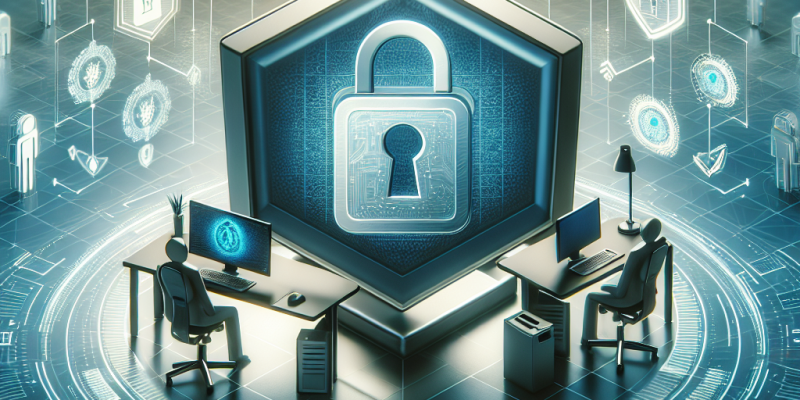Securing Remote Work: Best Practices for Employees and Employers

The shift to remote work has been accelerated by global events and advancements in technology, allowing businesses to tap into a broader talent pool and provide employees with more flexibility. However, this transition also brings with it a host of cybersecurity challenges. Protecting sensitive data and ensuring that both employees and employers adhere to best practices is more crucial than ever. Below are some essential strategies for securing remote work environments, tailored for both employees and employers.
Understanding the Landscape
As the remote work trend grows, so do the intricacies of cyber threats. The rise of phishing attacks, ransomware, and data breaches underscores the need for robust security measures. Remote workers often use personal devices and home networks, which may lack the security of corporate environments. Additionally, the intermingling of personal and professional data on these devices creates further vulnerabilities.
Best Practices for Remote Employees
-
Use Strong, Unique Passwords: Passwords remain the first line of defense. Employees should use complex passwords that consist of a mix of letters, numbers, and symbols. A password manager can help store and manage these credentials securely.
-
Enable Multi-Factor Authentication (MFA): MFA adds an extra layer of security, requiring users to verify their identity through multiple means (something they know, something they have, or something they are). This makes unauthorized access significantly harder.
-
Secure Home Networks: Ensure that home Wi-Fi networks are secured with strong passwords and encryption. Consider changing the default settings on routers and regularly updating passwords.
-
Keep Software Updated: Regularly updating operating systems, applications, and antivirus software is essential in patching known vulnerabilities and protecting against the latest threats.
-
Be Wary of Phishing Attempts: Employees should be trained to recognize phishing emails and suspicious links. Verify the sender’s credentials and avoid clicking links or downloading attachments from unknown sources.
-
Use VPNs: A Virtual Private Network (VPN) encrypts internet traffic, protecting sensitive data during transmission. Employees should utilize a company-approved VPN when accessing corporate resources.
-
Limit Access to Sensitive Data: Only access and share sensitive information when necessary. Employing the principle of least privilege ensures that users only have access to information pertinent to their job tasks.
- Secure Personal Devices: If personal devices are used for work, ensure they are secured with passwords, fingerprint locks, or other authentication measures. Consider separating work and personal data as much as possible.
Best Practices for Employers
-
Establish Clear Security Policies: Employers should develop and communicate clear remote work security guidelines, outlining expectations regarding data protection, device usage, and acceptable online behavior.
-
Conduct Regular Security Training: Ongoing training can heighten employees’ awareness of security risks and best practices. Regularly update training programs to address new threats as they emerge.
-
Provide Necessary Tools: Ensure employees have access to the tools they need for secure remote work, including VPNs, secure communication platforms, and password management tools.
-
Monitor and Audit Networks: Implement monitoring solutions to detect unusual activities within the company’s network. Regular audits can help identify potential vulnerabilities and areas requiring improvement.
-
Create an Incident Response Plan: Be prepared for potential data breaches or security incidents with a defined response plan. This should include steps for containment, investigation, notification, and recovery.
-
Secure Endpoints: Ensure that all devices accessing the company network are equipped with adequate security measures, including firewalls, antivirus software, and mobile device management tools.
-
Encourage Regular Check-Ins: Maintain communication with remote employees through regular check-ins. This not only fosters teamwork but also allows employers to gauge the security practices being employed by their staff.
- Implement Data Encryption: Ensure that sensitive company data is encrypted, both at rest and in transit. This makes it difficult for unauthorized users to access or utilize the data even if it is compromised.
Conclusion
The transition to remote work presents both opportunities and challenges. By adopting robust cybersecurity practices, both employees and employers can work together to create a secure remote work environment. A proactive approach to securing data and fostering a culture of security awareness is essential in today’s digital age. In doing so, businesses can not only protect their assets but also build trust with their employees, clients, and stakeholders. As we continue to navigate the evolving landscape of remote work, the need for security will only become more pronounced, emphasizing the importance of vigilance and adaptability.














